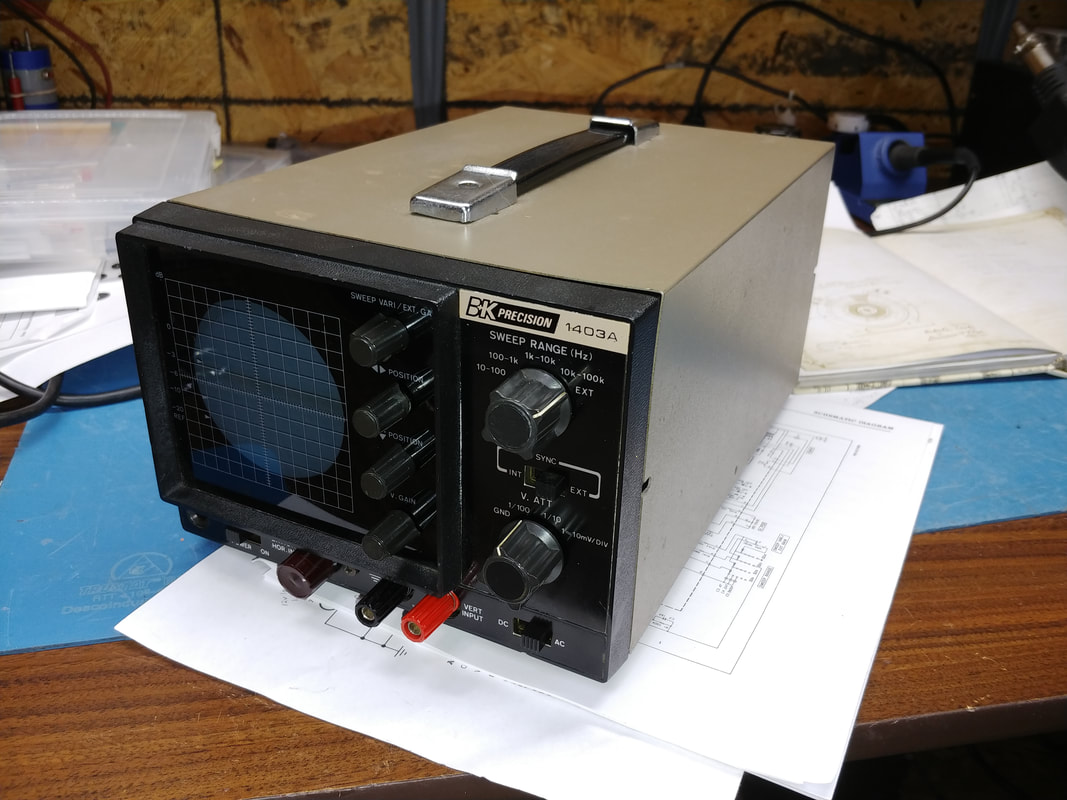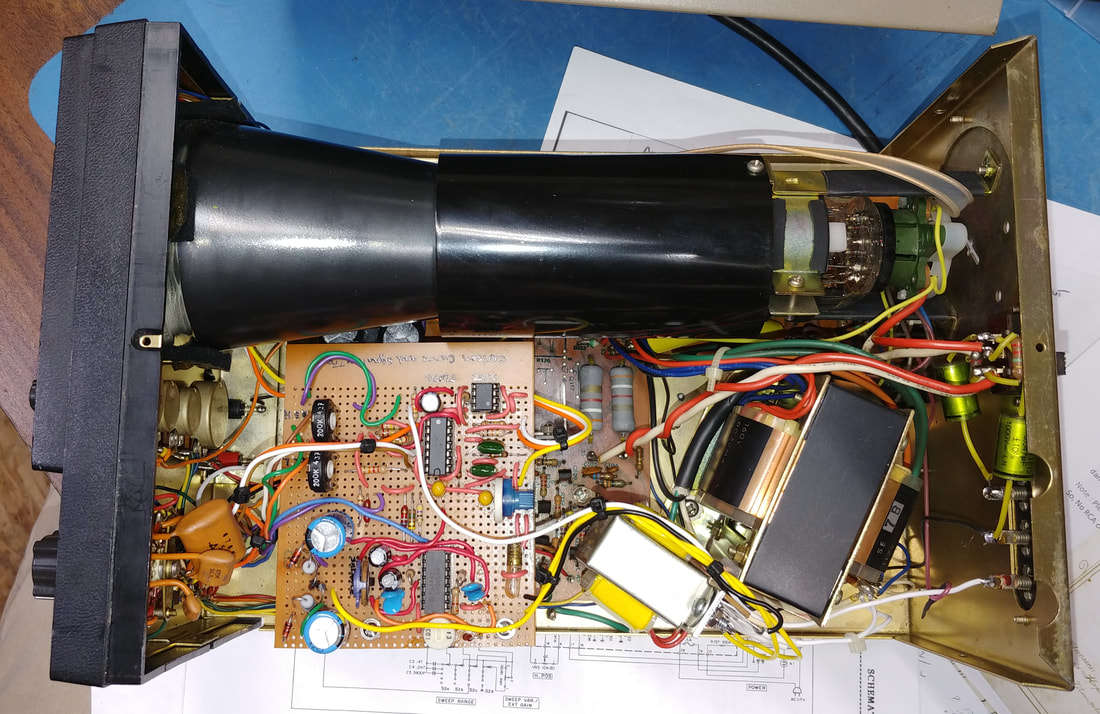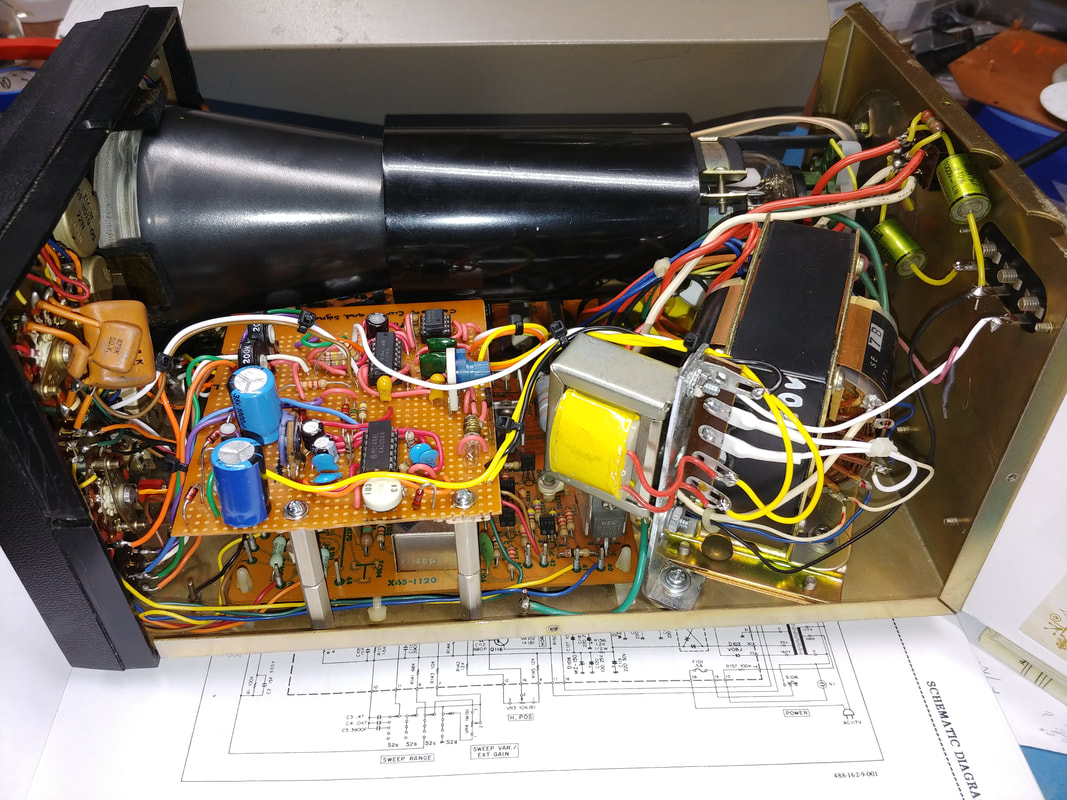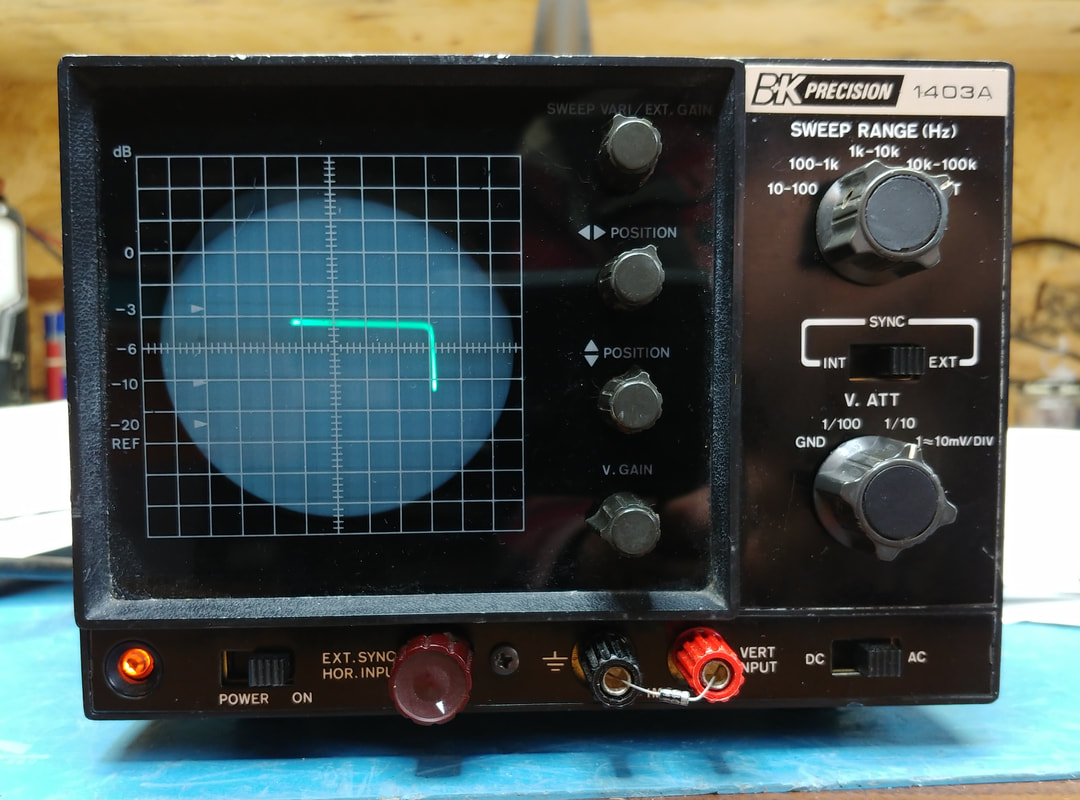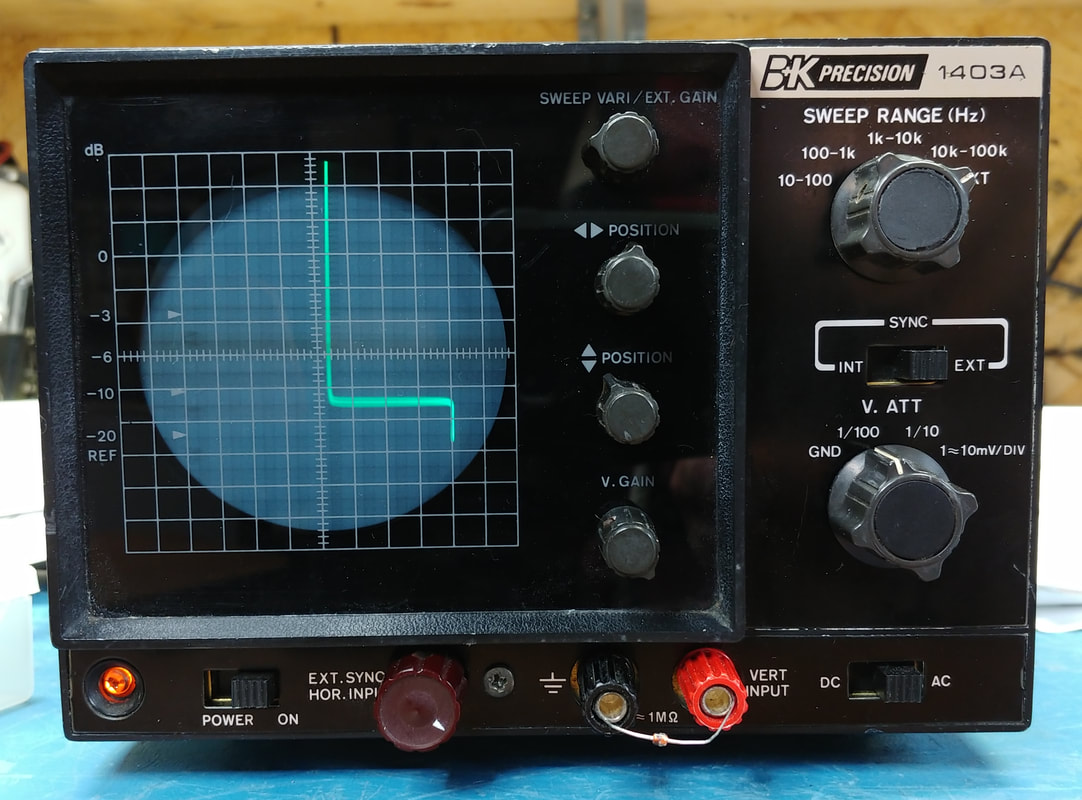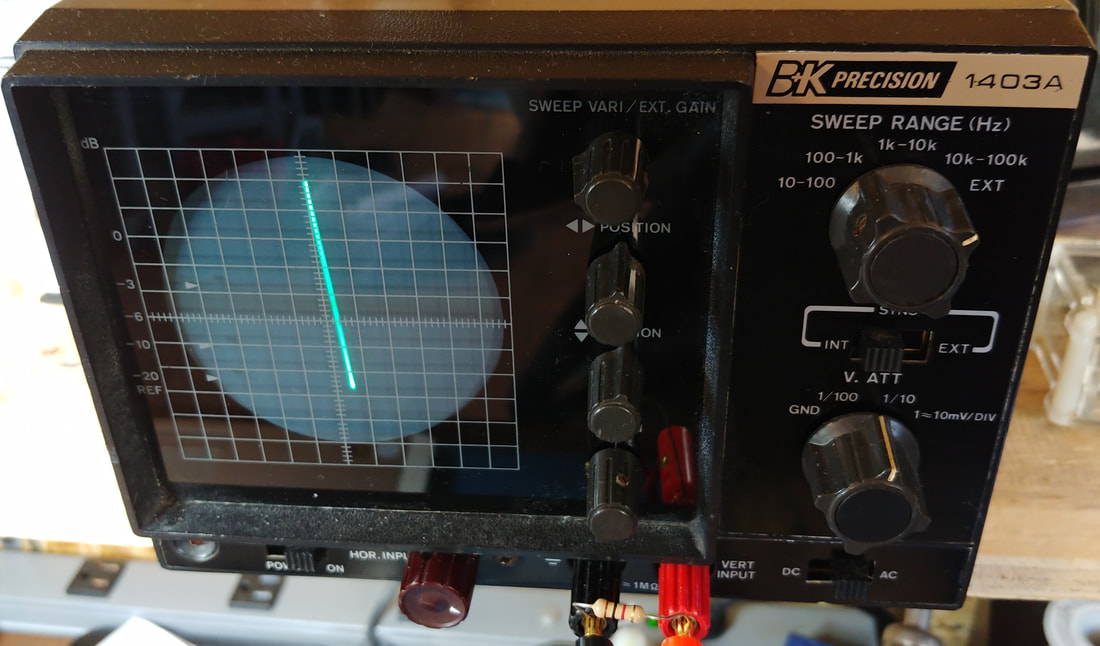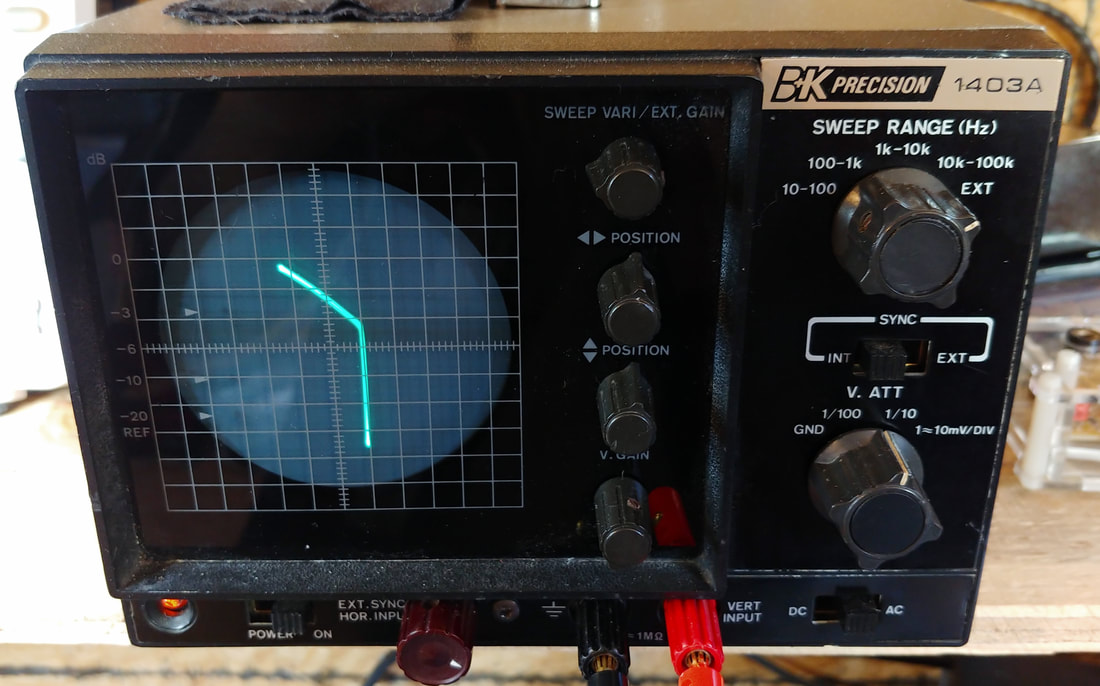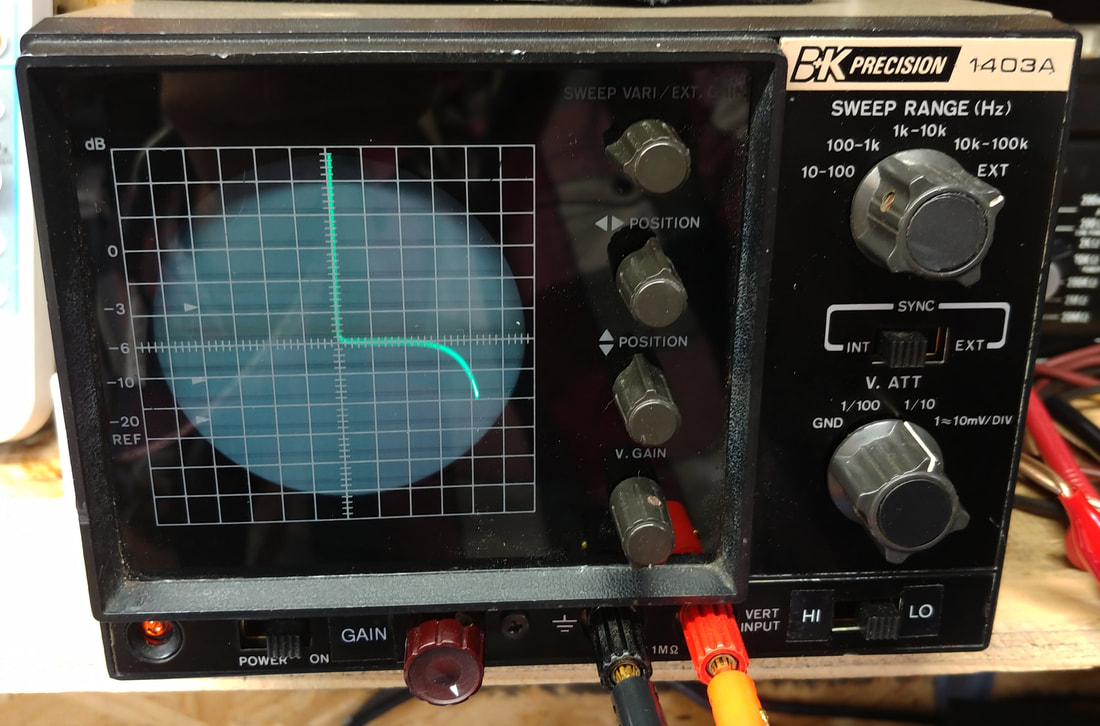Converting a B&K Oscilliscope into a Component Signature Curve Tracer
A signature, or component tracer is a type of curve tracer for testing various electronic components in and out of circuit, and it's a very handy tool for troubleshooting. This tracer was created by converting a 1980's vintage B&K model 1403A oscilloscope using the curve tracer schematic available from Mr. Carlson's Lab on Patreon. The schematic and PCB files are available to his subscribers.
This instrument is a transistorized general purpose compact 5MHz oscilloscope and B&K produced several similar models including the 1403, 1403A and the 1405. It doesn't have the greatest of specs, but it doesn't need them for the component tracer, and it's compact size is perfect for the job.
This instrument is a transistorized general purpose compact 5MHz oscilloscope and B&K produced several similar models including the 1403, 1403A and the 1405. It doesn't have the greatest of specs, but it doesn't need them for the component tracer, and it's compact size is perfect for the job.
A word of warning concerning transistorized scopes like this: there is VERY HIGH VOLTAGE inside. Even though the unit may be transistorized, the CRT is still a tube and there are potentials as high as 1400VDC inside. If you're not experienced working on equipment like this then DON'T! Proceed at your own risk.
|
The first step in converting the scope to a tracer was completely recapping it and confirming it is in working condition. Next several components were removed or repurposed on the front panel to accommodate the curve tracer. The EXT Horizontal input jack was removed and the tracer's oscillator level control substituted, and the external horizontal input switch position was connected to the tracer board's Horizontal Out.
The AC/DC switch was rewired to serve as the Lo / Hi current selector and the Vertical Input jack was rewired as the tracer probe input. The tracer board's Vertical Out was connected to the scope's attenuator switch and on to the vertical input. The Z-Axis input terminal on the rear was disconnected and replaced with the Meter Out line, which allows connecting a DVM as a digital readout of the oscillator voltage level. |
The modifications to the scope are reversible, no new holes were drilled or any other changes made that couldn't be undone if desired. The only inputs to the scope circuitry after the mods are from the tracer PCB, but basic scope functions still work and can be used for verifying proper tracer operation. Building the circuit on prototyping board turned out to be a bit time consuming, but the conversion itself was fairly straight forward.
|
Although there are PCB layouts for both the tracer PCB and a power supply on Patreon, this tracer was hand wired on prototyping board because I wasn't setup to make PCBs at the time. The ICs in the picture are op amps and a dual +/- power supply regulator. The board's input power comes from a separate power transformer which was added near the scope's xformer.
|
|
The tracer PCB is attached using standoffs mounted in existing chassis holes. Likewise, the tracer power transformer is also mounted using an existing hole.
The tracer power supply is +/- 17.5VDC. The oscillator runs at 1KHz with a max output voltage of about 15.5V and is adjustable via a front panel gain control. There are two current ranges: Low = 1ma and High =10ma. |
Page created 2/11/2020
Last updated 4/19/2021
Last updated 4/19/2021

